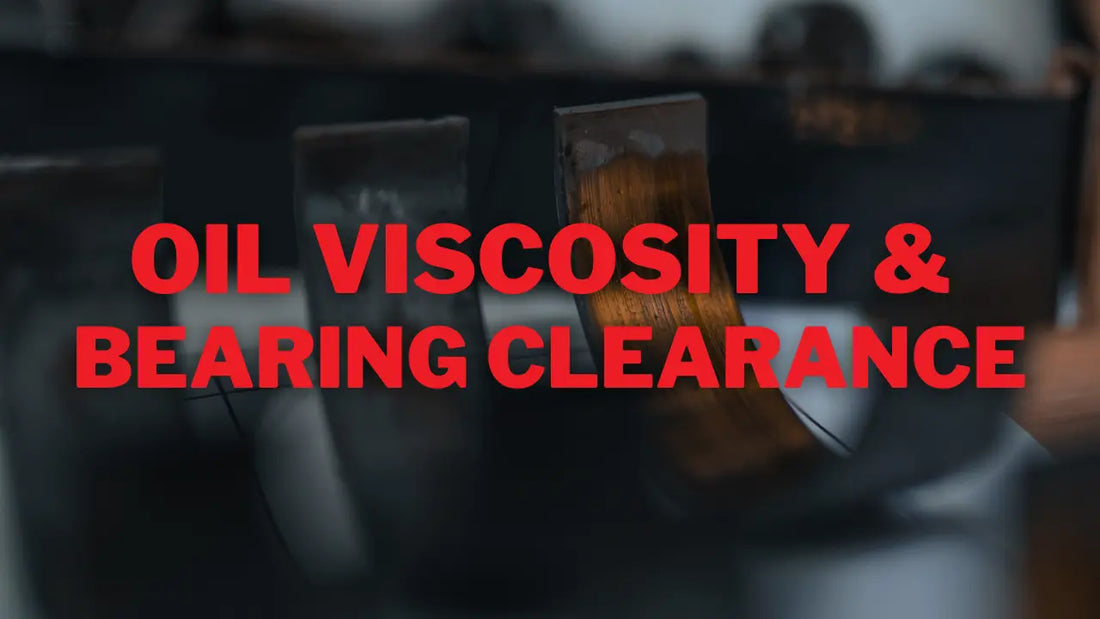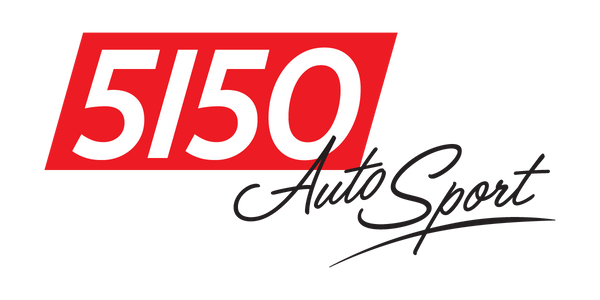
Oil Viscosity and Bearing Clearance
This week, we're breaking down Oil Viscosity, Bearing Clearance, and what the two have to do with each other. This isn't meant to teach you how to determine either on your own, don't worry, but rather to help you understand these two concepts and why our engine advisors give the oil recommendations they do when you ask. But before we jump in, let's cover these two core concepts:
Oil Viscosity
What is Oil Viscosity? This is a measurement that refers to how ‘thick’ or ‘thin’ an oil is. In other words, how resistant the oil is to flow.
Viscosity is a critical property because it determines how well the oil is lubricating moving engine components at different temperatures. Proper viscosity ensures the oil will flow easily enough to maintain a protective film that lubricates components and prevents wear and tear.
The Society of Automotive Engineers (SAE) developed a system for indicating Oil Viscosity that is used in modern oil manufacturing consisting of numbers and letters. Modern oils are multi-grade, meaning they perform well in both hot and cold temperatures. We will use the grade ‘5W-30’ as an example:
Bearing Clearance
‘Bearing Clearance’ refers to the small gap between the bearing surface and the crankshaft journal. This clearance allows for the oil film to form, lubricating the moving parts and preventing metal-on-metal contact. Your engine builder will make these measurements as they assemble your engine.
Proper bearing clearance is crucial for engine longevity and performance. Too little clearance will cause friction and overheating, while too much clearance will result in oil pressure loss and inadequate lubrication.
Maintaining proper bearing clearance in high-performance BMW engines is crucial, especially in the high-load, high RPM applications we tend to work with here at 5150 AutoSport. To determine both proper bearing clearance and corresponding oil viscosity, we take the following considerations into account:
Oil Viscosity & Bearing Clearance
There is a delicate balance between bearing clearance and oil viscosity, generally determined by bearing clearance and temperature range. Typically, the tighter the bearing clearance, the lower the oil viscosity while higher clearances require thicker oil.
A given bearing clearance is affected by three main factors: load carrying capacity, the amount of oil flow allowed by the clearance, and localized oil temperature. These three factors each affect the other in the following ways:
Oil viscosity changes with temperature, thinning as temperature rises. A phenomenon known as mixed film condition can arise as reduced clearances and / or reduced oil viscosity cause the crankshaft journal and the bearing to wear, as they are improperly lubricated. The combination of oil viscosity, bearing speed, and load contribute to establishing the thickness of the film of oil at work in your engine.
Mixed Film Condition refers to an intermediate lubrication state where a thinned oil film is present, but there is also some level of direct contact between the metal surfaces.
While we hope your engine will never be in a state of mixed film condition, we know that the extreme conditions of performance engines often push them to their limits. This is another reason why 5150 AutoSport chooses to use Calico anti-friction coatings on all of our main and rod bearings. Calico's specialized Dry Film Lubricant Coating is designed to reduce friction and abrasive wear, compensating for oil starvation and mixed film conditions.
Film thickness, then, will determine the long term ‘health’ of your engine and its internals. Synthetic oils are significantly better at lubricating and protecting engine components than conventional oils when subjected to high temperature operation, radically reducing physical contact between the crankshaft and the main and rod bearings, because they offer superior film thickness at higher temperatures. In other words, synthetic oils are much less prone to thinning so drastically at high operating temperatures that a mixed film condition state could arise.
Today’s synthetic oils also have a much greater load-carrying capacity than older conventional oils, spreading the load over a larger area for greater overall capacity and reduced bearing stress and wear. Most manufacturers, including Driven Racing Oil, outline what oil will work best for your application based on engine block / main cap material and main bearing clearance, connecting rod material and rod bearing clearance, and maximum oil temperature (remember that as engine temperature increases, oil viscosity decreases). When there is a conflict between rod and main bearing clearances, it is best practice to default to the heavier of the two viscosity recommendations.
Finally, while the recommended oil application outlined by the manufacturer is a helpful starting point, it is important to note that they are exactly that: starting points. Always consult with your engine builder regarding what oil will be the best for your individual engine and application.
